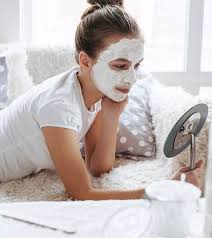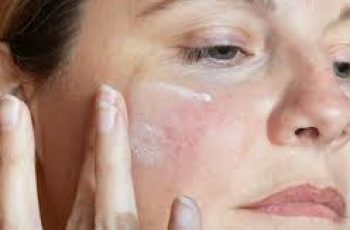
Skin Care Advice for Teenagers: The Ultimate Guide to Healthy, Glowing Skin
Adolescence is a time of exciting change, and your skin is no exception. As you go through hormonal shifts and environmental changes, it’s natural to notice new challenges—whether it’s acne, dryness, or sensitivity. But don’t worry, you’re not alone on this journey! Understanding your skin and creating a personalized skincare routine is the first step to achieving healthy, glowing skin. In this ultimate guide, we’ll explore everything you need to know about skincare for teenagers, from skin types to key routine steps and how to care for your unique skin.
Let’s dive into this exciting skincare journey!
Understanding Your Skin: A Vital First Step
Before you can begin selecting products or creating a routine, you need to first understand what your skin truly needs. Your skin is as unique as you are, and knowing your skin type will help you pick the best products for your needs. You can start with the Baumann Skin Type Quiz, a tool used by dermatologists to assess your skin’s specific characteristics like oiliness, sensitivity, pigmentation, and wrinkle tendencies. Taking this quiz will give you a tailored path toward the best skincare routine.
Skin Types Explained: Oily, Dry, Sensitive, and More
Once you understand the different skin types, you’ll be better equipped to pick products that work for you. Here’s a breakdown of the main skin types:
1. Oily Skin
If your skin looks shiny, especially in the T-zone (forehead, nose, chin), and you experience frequent breakouts, you might have oily skin. This occurs when your skin produces excess sebum (oil), which can clog pores and lead to acne. Oily skin requires gentle, oil-free products that won’t exacerbate the shine but still hydrate and balance the skin.
2. Dry Skin
Dry skin feels tight, and may appear flaky or rough. It can be prone to redness, irritation, and dryness-related issues like cracked skin. This type of skin struggles to retain moisture, so it needs extra hydration and soothing products to replenish and lock in moisture.
3. Sensitive Skin
Sensitive skin is reactive. It might get red, itchy, or inflamed when exposed to certain skincare ingredients or environmental factors. If you notice that your skin tends to react to new products or changes in weather, it’s likely sensitive. This type of skin benefits from gentle, fragrance-free products that won’t cause irritation.
4. Resistant Skin
Resistant skin is the low-maintenance type. It doesn’t react much to products or environmental stressors. It’s less prone to irritation and can tolerate a wider range of skincare products. For teens with resistant skin, it’s still important to maintain a balanced routine to keep skin healthy and prevent future issues.
5. Hyperpigmented vs. Evenly Pigmented Skin
Hyperpigmented skin features areas of uneven color, like dark spots or patches, which are often the result of sun exposure or acne scars. Evenly pigmented skin has a uniform complexion with little to no noticeable discoloration. Understanding this will guide you in choosing products that help either even out skin tone or preserve its natural uniformity.
Building the Right Skincare Routine: Step-by-Step
Creating a skincare routine that matches your skin type and addresses your skin’s needs is key to achieving glowing skin. Here’s a simple breakdown of the essential skincare steps for teens:
1. Cleanser: The First Step
Cleansing is the foundation of your skincare routine. It helps remove dirt, oil, and impurities from your skin, keeping it fresh and clean. For oily skin, opt for a gel-based or foam cleanser that removes excess oil, while dry skin types will benefit from cream or hydrating cleansers that won’t strip moisture. If you have sensitive skin, look for gentle, fragrance-free cleansers.
2. Eye Cream: A Little TLC for Your Eyes
The skin around your eyes is thinner and more delicate than the rest of your face, which is why it needs special care. If you’re noticing puffiness or dark circles, an eye cream with ingredients like caffeine, peptides, or hyaluronic acid can help. Though it’s often overlooked, this step helps nourish and protect this delicate area.
3. Toner or Serum: Target Specific Skin Needs
Toners are typically used by those with oily skin. They help remove any remaining oil or dirt after cleansing and can also tighten pores. On the other hand, serums are packed with concentrated ingredients that target specific skin concerns like acne, hydration, or pigmentation. Whether you’re trying to clear acne or brighten your complexion, a serum is an excellent addition for all skin types.
4. Moisturizer: Lock in Hydration
No matter your skin type, moisturizing is essential. Moisturizers help lock in hydration, keeping your skin soft, smooth, and plump. Oily skin types should look for lightweight, non-comedogenic (won’t clog pores) moisturizers, while dry skin types might need thicker creams. Sensitive skin types should opt for fragrance-free, gentle formulas that won’t cause irritation.
5. SPF: Don’t Skip the Sunscreen!
Sunscreen is the most important step in your skincare routine—yes, even if you’re not spending a lot of time outside. UV rays can cause premature aging, hyperpigmentation, and even skin cancer. Choose a broad-spectrum sunscreen with SPF 30 or higher. Even on cloudy days, your skin needs protection from the sun’s harmful rays.
Comedogenic Ingredients to Avoid: Stay Acne-Free
Some skincare ingredients are comedogenic, meaning they can clog pores and lead to acne breakouts. If you’re prone to acne, watch out for these ingredients:
Coconut oil
Cocoa butter
Soybean oil
Evening primrose oil
Olive oil
Always check product labels for these ingredients, especially if you have oily or acne-prone skin. Choosing non-comedogenic products will help prevent unwanted breakouts.
Sun Exposure & Anti-Aging Practices: Start Early!
While the teen years are focused on clearing up acne and achieving healthy skin, it’s never too early to start practicing good anti-aging habits. One of the biggest contributors to premature aging is sun exposure, which can cause wrinkles, sunspots, and collagen breakdown.
SPF is your number one anti-aging tool, so be sure to wear it every day—yes, even when it’s rainy or cloudy. Additionally, incorporating antioxidant-rich products like vitamin C can protect your skin from free radical damage.
Starting these habits early will keep your skin looking youthful as you grow older.
Special Considerations for Darker Skin Tones
If you have dark skin, it’s important to remember that the basic skincare routine remains the same as for lighter skin tones. However, there are some unique considerations to keep in mind:
1. Dealing with Ashy Skin
Darker skin tones are more prone to feeling dry or ashy. This happens when the skin’s moisture barrier is compromised, leading to a dull and grayish appearance. To combat this, use rich hydrating moisturizers, shea butter, and natural oils like jojoba or argan oil. These ingredients will help nourish your skin and give it a healthy glow.
2. Ingrown Hairs
Ingrown hairs (pseudofolliculitis barbae) are more common in people with curly or coarse hair. They occur when hairs grow back into the skin, leading to bumps and irritation. Shaving and waxing can exacerbate this issue, so be sure to exfoliate regularly and follow proper shaving techniques to reduce the chances of ingrown hairs.
3. Hyperpigmentation
Dark spots and hyperpigmentation are common concerns for darker skin tones. If you experience discoloration from acne, ingrown hairs, or sun exposure, consider incorporating products with vitamin C, niacinamide, or alpha hydroxy acids (AHAs) to help brighten your complexion and even out skin tone.
Shaving: A Key Part of Teen Skincare
Shaving is an important part of skincare for many teens, especially as your body and skin undergo changes. While shaving can help achieve smooth skin, it can also cause irritation, cuts, and ingrown hairs if done incorrectly.
Here are a few tips for a better shave:
Always use a sharp razor and shave in the direction of hair growth.
Apply a gentle shaving cream or gel to reduce friction.
Exfoliate regularly to remove dead skin cells and prevent ingrown hairs.
After shaving, apply a soothing, alcohol-free moisturizer to calm the skin.
Embrace Your Skin: Confidence Is Key!
Teenage skin can be tricky, but with the right knowledge and routine, you can keep it looking and feeling its best. It’s all about embracing your individuality and finding what works for you. Your skin is a reflection of your inner health, and with patience and consistency, you’ll see results.
For more skincare tips, routine ideas, and answers to all your skincare questions, be sure to check out our YouTube channel. We’re excited to help you along the way to achieving confident, glowing skin!
Here’s to loving your skin—every step of the way!


